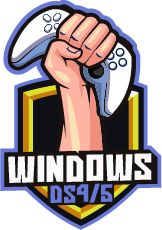
If your real controller isn’t being detected, DS4Windows Not Working with Steam it can be a frustrating experience, especially when you’re eager to jump into your favorite games. However, this issue is often fixable with some straightforward troubleshooting steps. Here’s a comprehensive guide to help you resolve real controller detection problems effectively.
1. Check the Physical Connection
Before diving into more complex solutions, start with the basics:
- Cable and Ports: Ensure that your controller is properly connected to the device. If it’s a wired controller, check both the USB cable and the port. Try using a different USB port or a different cable if possible.
- Wireless Controllers: For wireless controllers, make sure they are properly paired with your device. Check the battery level and replace or recharge the batteries if needed.
2. Update or Reinstall Drivers
Outdated or corrupt drivers can often be the cause of detection issues. To address this:
- Windows: Go to Device Manager, locate your controller under “Human Interface Devices” or “Universal Serial Bus controllers,” right-click, and select “Update Driver.” You can also uninstall the driver and then restart your computer to reinstall it automatically.
- Mac: For macOS, ensure your system is updated to the latest version. Check for any available updates for your controller’s drivers or firmware through the manufacturer’s website.
3. Check for Software Conflicts
Software conflicts can prevent your controller from being detected. Here’s how to address this:
- Close Background Applications: Ensure that no other applications that might interfere with controller functionality are running.
- Disable Conflicting Software: Some software programs, particularly those related to gaming or hardware management, might conflict with your controller. Temporarily disable or uninstall them to see if this resolves the issue.
4. Verify Controller Settings
In some cases, the problem might be related to the settings of your device or software:
- Gaming Software: If you’re using specific gaming software or platforms (like Steam or Xbox App), check the controller settings within the application. Ensure that the controller is enabled and configured correctly.
- Device Settings: For Windows, navigate to “Settings” > “Devices” > “Bluetooth & other devices” and check if the controller is listed. If not, try adding it manually.
5. Test with Another Device
To determine if the issue lies with the controller or the device you’re using, try connecting the controller to a different computer or console. If it’s detected by another device, the issue may be with the original device’s settings or hardware. Conversely, if the controller doesn’t work with any device, it might be faulty and require repair or replacement.
6. Perform a System Restart
Sometimes, a simple restart can resolve detection issues. Restart your computer or console and reconnect your controller. This can refresh the system and might solve the problem.
7. Update Firmware
For some controllers, especially newer models, firmware updates can resolve detection problems. Check the manufacturer’s website for any available firmware updates and follow the instructions to apply them.
8. Consult Support
If you’ve tried all the above steps and your controller still isn’t detected, it might be time to consult customer support. Reach out to the controller’s manufacturer for further assistance or consider professional repair services if needed.
By following these steps, you should be able to diagnose and fix most controller detection problems. Whether it’s a simple connection issue or a more complex software conflict, these solutions will help you get back to your gaming sessions in no time.